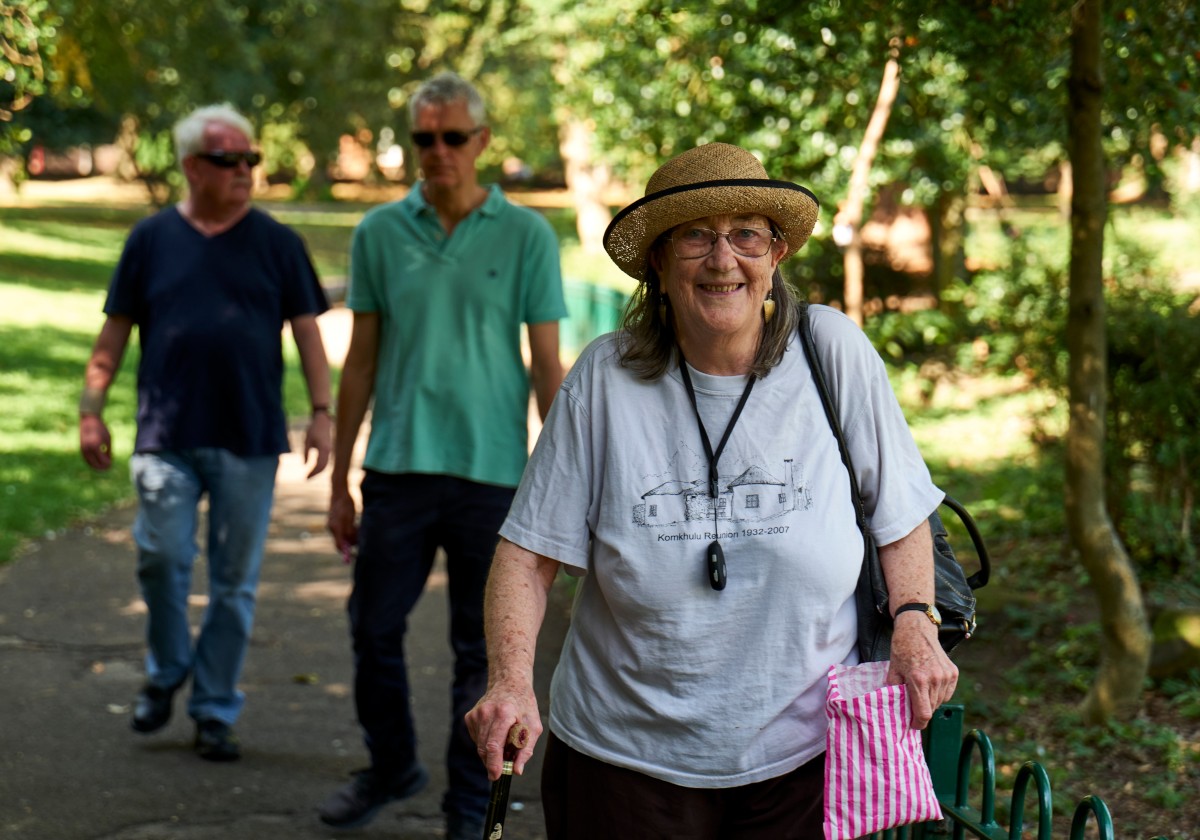I was musing last week about how my lifestyle and living strategies have changed as I have aged. I’m in my sixties and I firmly believe fall prevention and awareness strategies are crucial to wellness and independence. Firstly, falls are a leading cause of injury and even death among older adults. Secondly, a fall can lead to a loss of independence and a decline in quality of life. Thirdly, falls often require hospital treatment and I can think of few less appealing ways to spend 12 hours than waiting around A&E and the fracture clinic.
By acknowledging how common falls are and thinking about fall prevention strategies we can safeguard the health, independence and wellbeing of our loved ones and ourselves.
Falls can happen to anybody, and it did to me. I had just left my local Japanese restaurant and missed the second step launching myself forward to the pavement face first. Fortunately, instinct kicked in, my hands flew out in front of me breaking my fall just as my chin was about to smash into the pavement. Apart from minor grazed palms and a seriously bruised ego, I was lucky. I could easily have had broken teeth, a fractured wrist, and a bloodied face. I regularly reflect, was I lucky or had my resistance training saved the day? And, more importantly, what could I do to prevent this from ever happening again?
For older people, a fall is the biggest risk to wellbeing, independence and longevity. A survey by Age UK in May 2019 found that it was their top concern. A paper, Preventable Deaths Involving Falls in England and Wales, by Kaiyang Song and colleagues, concluded that 8 years of life were lost following a fall. That’s a stunning statistic. Falls are the biggest cause of preventable deaths and 30% of people 65+ fall at least once per year. We therefore need to prevent ourselves from falling and minimise the risk of serious injury if we do.

Fall prevention
Fall prevention must start with vigilance or awareness of our surroundings. We are so often distracted by our mobile phones, talking to a friend, or supervising grandchildren that we don’t see the step, the broken pavement, the kerb, the hole, the spillage. Or we were overconfident and didn’t put the light on to walk down the stairs and didn’t see an object left on the ground. Our innate visual perception keeps us safe, but our visual abilities also decline with age. Take note, to have regular eye checks. Also, today the number of dangers has increased, as streets are busier, road surfaces have deteriorated and people walk around oblivious of others.
Stability is critical to fall prevention. This starts with breathing, which helps set our centre of gravity. It then travels through the feet, our foundation for any movement. Too many of us have lost strength and awareness of our feet, in particular our toes. In part, this is because we spend too much time in thick cushioned shoes. Walking barefoot forces our feet to work harder and can strengthen our foot muscles, as well as improve balance and posture. In fact, people who walk barefoot for the first time discover an extra sensation, especially when their feet are in contact with the earth. Yoga or Tai Chi are excellent forms of exercise for breathing, whole-body stretching and balance.
A good test of our stability is the ability to stand on one leg. In fact, for people 50+ this has been correlated to longevity. The NHS notes that this duration falls with age, with a target of 37 seconds for someone 50 to 59; 30 seconds for someone 60 to 69 and 19 seconds for someone 70 to 79. And if you can’t stand on one leg for just 10 seconds, there is a higher risk of death in the next 10 years.

Muscle strength is also critical to prevention. Stronger skeletal muscles provide much greater support and delay frailty a major cause of falling. Our muscles are made up of fast-twitch and slow-twitch fibres and it is the fast-twitch muscles that automatically steady us and put us back into balance. If they are weak, then our risk of falling increases.
As we age, we lose fast twitch fibres. Muscle fibre loss in general is due to a loss of motor neurons, or communication cells that send signals to the muscles to make them perform. Typically, 60-year-olds have 25% to 50% fewer motor neurons than a 20-year-old. Resistance training can help build fast twitch fibres and aerobic exercise can preserve nerve function and promote nerve regeneration as it increases blood flow.

Minimising injury
However much we reduce the risk, at some point, we will fall, as I learned. The next best thing we can do is to try to minimise injury. Once again, strength plays a critical role and our fast-twitch muscle fibres deliver the significant speed and power reaction to break our fall. We may also be helped by any lifetime training in judo. However, there’s nothing much we can do if our hands are in our pockets.
When we fall, the damage will be significantly magnified if we have already lost bone mineral density. Sometimes, it is only because of a fall fracture that we realise we have lost bone mineral density. Just as with muscles, keeping our bones strong is a smart goal as we age. Many people have osteoporosis and don’t even know it, since the bone density loss has gradually occurred over a long period with no symptoms. Whilst both men and women can get it, for women it can often follow menopause and they have less bone tissue than men. Check your family history of osteoporosis or fractures, as this can put you at greater risk. If you have concerns consult your doctor.
Weight-bearing activities like walking are good for bone health. Try rucking, which is walking with a weighted backpack Also it’s important to get enough calcium and vitamin D, which helps to absorb the calcium.
One highly recommended product is Vitabiotics ultra Vitamin D, available on Amazon. Check it out here.
(As an Amazon Associate Autum earns from qualifying purchase)

10 fall prevention tips
- Stay physically active: Engage in regular exercise to improve strength, balance and flexibility. Activities like walking, swimming, or Tai Chi can be beneficial.
- Review your medicines: Some medications can cause dizziness or drowsiness, increasing the risk of falls. Talk to your doctor to review medications and their potential side effects.
- Have regular eyesight check-ups: Poor vision can contribute to falls. Ensure that your prescriptions for glasses and contacts are up-to-date and adequate lighting is available in and around your home.
- Remove hazards at home: Clear clutter, secure loose rugs, and ensure that pathways are clear to prevent tripping. Install handrails and grab bars in bathrooms and stairways for support.
- Care for your feet: Outdoors – choose shoes with non-slip soles and proper support to maintain stability while walking. While indoors, try going barefoot or wear socks with non-slip soles. This forces your feet to work harder and can strengthen foot muscles, as well as improve balance and posture.
- Use assistive devices: Consider using a cane or walker if needed for support and balance. Make sure they are properly adjusted and maintained.
- Take precautions in the bathroom: Use non-slip mats in the shower or bathtub and install a raised toilet seat if necessary. If you have reduced mobility, consider a shower chair for added stability.
- The Great British weather: Be cautious in slippery conditions, such as wet or icy surfaces. Use handrails when going up or down stairs.
- Stay hydrated and eat well: Dehydration and poor nutrition can weaken muscles and increase the risk of falls. Drink plenty of water and eat a balanced diet.
- Stay alert: Be aware of your surroundings and take your time when moving around, especially in unfamiliar or dimly lit areas.
Falls are one of the biggest causes of loss of independence for older people in this country. The actions we take now can help to lower that risk. At Autum, we can help find fun local activities that make you more resilient, such as yoga, tai chi, table tennis, even dancing and great walks.
To help us make Britain one million biological years younger take our autum Lifescore calculator to determine your biological age and use our autum App on Android or IOS to help improve your biological age today!

A passionate entrepreneur who has spent years calculating life risks and has set up two successful innovative businesses. He believes with the right motivation and support we can extend healthy life. This is now his calling and has found a great team to make it happen.


